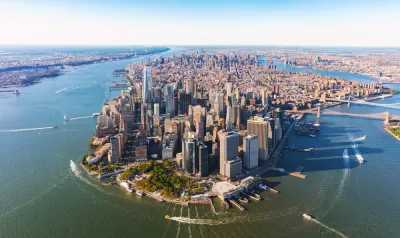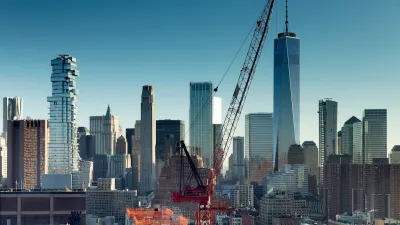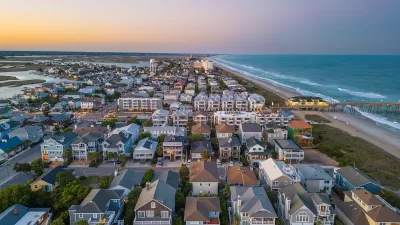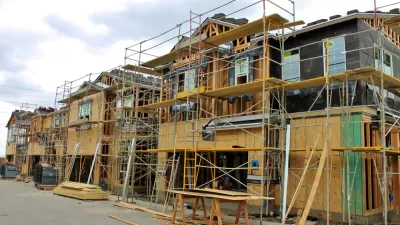A New York Times op-ed calls on the city to add landfill development on Manhattan's southern shoreline, claiming it would increase affordability and protect the city from rising sea levels.

In an opinion piece in the New York Times, Jason M. Barr argues that physically expanding Manhattan Island into New York Harbor would help solve two urgent crises at once: New York City's rampant housing shortage and the threats posed by rising sea levels to the island.
Barr proposes adding 1,760 acres of landfill development to Manhattan's southern shore, which would create an area larger than the Upper West Side. Barr recommends a similar density to that neighborhood, which could mean up to 180,000 new housing units.
With demand for housing growing faster than supply, New Mannahatta, as Barr calls the proposed addition to the city, could offer "the possibility to realize the goal of adding a significant number of new units, many of which can be made affordable for low-income households."
Meanwhile, the new land would fortify the city against the effects of climate change and add a buffer that would protect other vulnerable neighborhoods with protective ecologies like wetlands.
On the economic side, Barr believes the construction of the new neighborhood would "pay for itself through sales or long-term land leases," and envisions extended public transportation including ferries that would serve New Mannahatta's residents and visitors. For Barr, this proposal could help ensure the city's continued success by making it safer and more affordable.
FULL STORY: 1,760 Acres. That’s How Much More of Manhattan We Need.

Alabama: Trump Terminates Settlements for Black Communities Harmed By Raw Sewage
Trump deemed the landmark civil rights agreement “illegal DEI and environmental justice policy.”

Planetizen Federal Action Tracker
A weekly monitor of how Trump’s orders and actions are impacting planners and planning in America.

The 120 Year Old Tiny Home Villages That Sheltered San Francisco’s Earthquake Refugees
More than a century ago, San Francisco mobilized to house thousands of residents displaced by the 1906 earthquake. Could their strategy offer a model for the present?

Ken Jennings Launches Transit Web Series
The Jeopardy champ wants you to ride public transit.

BLM To Rescind Public Lands Rule
The change will downgrade conservation, once again putting federal land at risk for mining and other extractive uses.

Indy Neighborhood Group Builds Temporary Multi-Use Path
Community members, aided in part by funding from the city, repurposed a vehicle lane to create a protected bike and pedestrian path for the summer season.
Urban Design for Planners 1: Software Tools
This six-course series explores essential urban design concepts using open source software and equips planners with the tools they need to participate fully in the urban design process.
Planning for Universal Design
Learn the tools for implementing Universal Design in planning regulations.
Clanton & Associates, Inc.
Jessamine County Fiscal Court
Institute for Housing and Urban Development Studies (IHS)
City of Grandview
Harvard GSD Executive Education
Toledo-Lucas County Plan Commissions
Salt Lake City
NYU Wagner Graduate School of Public Service





























